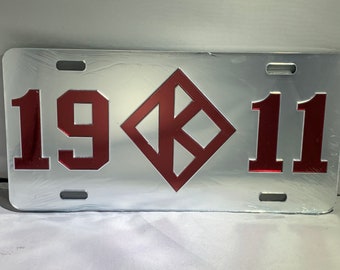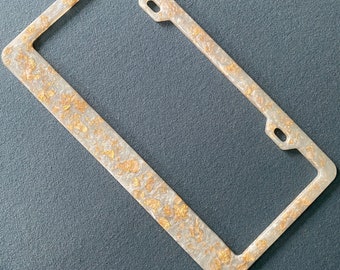

It’s the same processor as the Samsung Galaxy S5, so it’s basically like a smartphone without the screen,” said Pearl Auto’s head of product, Tyler Mincey. “We send both streams to the car adapter, which has a beefy eight-core Samsung processor.


The brainpower behind the RearVision is a plug-in adapter for the on-board diagnostic port included on all cars model-year 1996 and newer.
#AKA LICENSE PLATE PEARLS PLUS#
The assembly is powered by an integrated solar panel - that’s right, this sucker is powered by the sun - and there’s a backup USB cable in case it runs out of juice, plus a battery monitor in the Pearl application. One camera is tuned for daytime images and the other is an infrared-sensitive camera for night operation. The meat of the RearVision is a rear license-plate frame made up of two high-definition cameras with a wide 180-degree field of view. Intrigued by this noninvasive alternative, we reached out to Pearl for a test unit and installed RearVision on ’s long-term 2013 Volkswagen Jetta Sportwagen TDI.
#AKA LICENSE PLATE PEARLS ANDROID#
Pearl Auto RearVision is a wireless alternative that sends its image to a compatible Apple or Android smartphone via Wi-Fi and Bluetooth and requires no installation wiring. Related: Feds Say New Cars Must Have Backup Cameras By Model-Year 2019Ī typical aftermarket backup camera is an invasive installation hardwired into the vehicle’s systems wires run from the rear camera to the front display and are tapped into power/reverse signal sources. What’s unique about RearVision is that it installs in minutes and leverages hardware you likely already have: a smartphone and your car’s diagnostic port. Founded by former Apple iPod and iPhone team leaders, the company recently launched a $499.99 wireless backup camera called RearVision. One of the newest is from Pearl Automation. If your car doesn’t have one from the factory, a quick Amazon search provides an overwhelming array of options. CARS.COM - The effectiveness of backup cameras is well-documented, so much so that starting May 1, 2018, they’ll be federally mandated standard equipment on new cars.


 0 kommentar(er)
0 kommentar(er)
